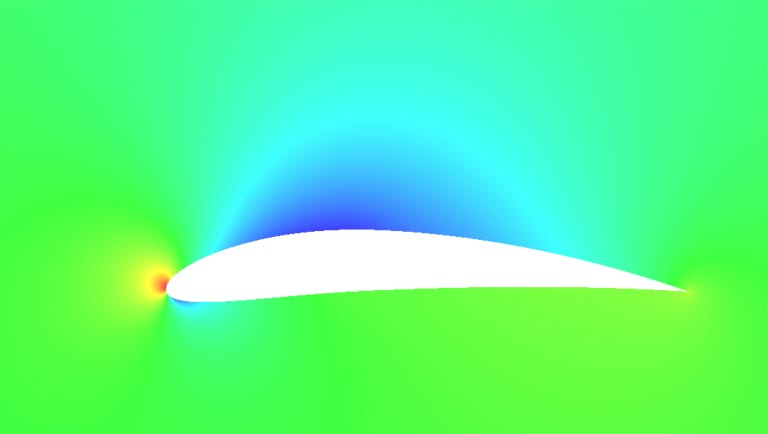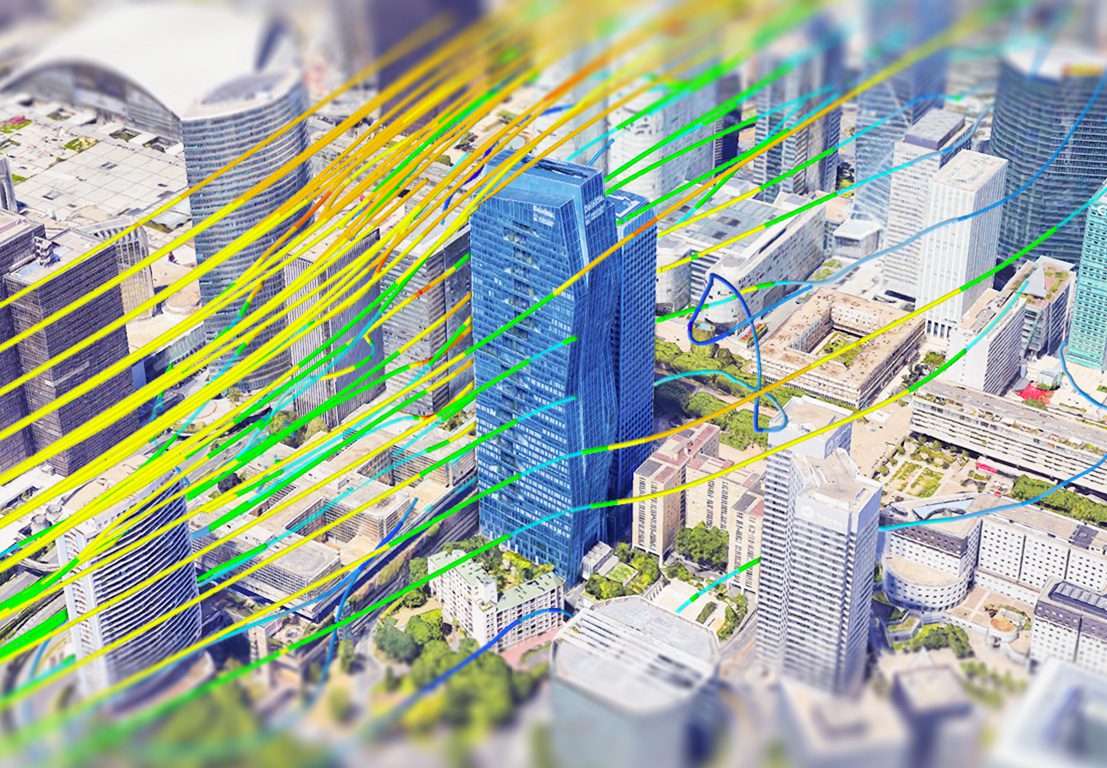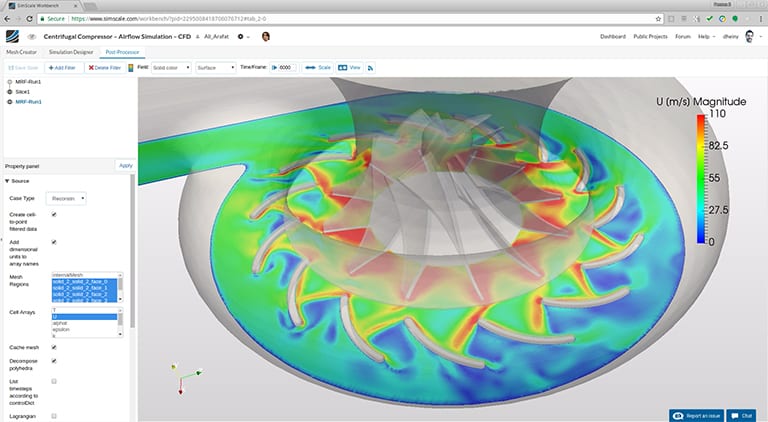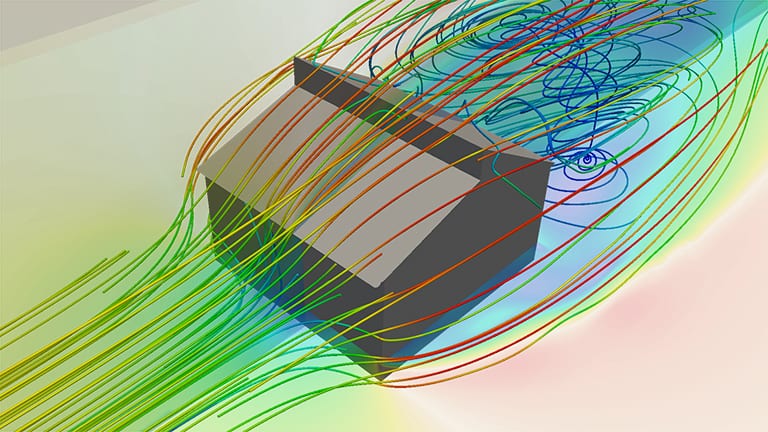Fluid mechanics is a vast subject and addresses issues related to the mechanical behavior of fluids. Fluids, in general, can mean both liquids and gasses. Fluid mechanics has a wide range of applications, from mechanical and aerospace engineering to geophysics and biomechanics. It is difficult to find real-world cases that are not influenced by fluid flows. There is no single fluid mechanics book that covers the topic in full but herewith is a list to aid the study of this topic.
This article discusses fluid mechanics books and the relevant literature pertaining to different areas of CFD that would be of interest to learners. Starting from basic thermodynamics and dimensional analysis, the article continues to address sources related to incompressible and compressible flows, viscous flows and boundary layers, acoustics, turbomachinery, and eventually turbulence.
Fluid Mechanics Dimensional Analysis and Mathematical Preliminaries
Dimensional analysis is a mathematical technique that is commonly used in fluid mechanics to study the influence of parameters on the flow. Dimensional analysis is used to build relationships between several variables.
One of the very common non-dimensional numbers is the Reynolds number, which quantifies the ratio between inertial and viscous forces prevalent in the flow. For example, when designing large structures in aerospace and aeronautical applications, it is impossible to build real-scale models during the design phase. Hence, reduced scale models are used to simulate the same turbulence effects (or Reynolds number flow).
One of the classics is the fluid mechanics book titled “Dimensional analysis” by Bridgeman P W. However, the book is quite old and shows inconsistencies with present notation. An alternate reference is “Similarity and Dimensional Methods in Mechanics” by L. I. Sedov. For the uninitiated, any fluid mechanics book should provide a brief overview of dimensional analysis to begin and which provides a suitable quick read to understand the topic in brevity.
In addition, a basic understanding of vector calculus goes a long way to an easier comprehension of mechanics. Some beginner references include:
- Vectors, Tensors, and the Basic Equations of Fluid Mechanics by R. Aris
- Vector Analysis Schaum’s Outline Series by M. R. Spiegel
Books General Fluid Mechanics Book List
Airflow analysis of a compressor with SimScale (turbulent and compressible flow)
Once the basics of dimensional analysis and the rationale for non-dimensional numbers have been established, an appropriate foundation exists to move into the area of general fluid dynamics.
“An Introduction to Fluid Dynamics” by G. K. Batchelor remains a classic fluid mechanics book that addresses the theories of this field in an elegant manner. Though published in 1960’s, this timeless classic still holds a reader’s attention.
“Physical Fluid Dynamics” by D. J. Tritton provides an excellent rendition of fluid mechanics related issues from the perspective of an engineer. This is a strongly recommended read for mechanical and aerospace engineers who are interested in understanding fluid mechanics.
If you’re looking to delve deeper into more advanced material, “Fluid Mechanics: An Intermediate Approach” by Bijay K. Sultanian takes a practical rather than purely theoretical approach. A variety of illustrative examples provide context to the subject matter and help navigate the reader through a broad range of topics.
For those who are more mathematically inclined, “Fluid Mechanics” by L. D. Landau and E. M. Lifshitz is a perfect treatise on fluid mechanics. The latest reprint also includes a chapter on computational fluid dynamics and introduces simple computational methodologies for simple flows.
Incompressible and inviscid flows, or commonly known as potential flows, are ordinarily used in design processes. Though simple, they provide an excellent estimate regarding the flow parameters. Most often, like in pipe flows, fluid velocity is small enough that there is no change in density. Thus, they can be considered as incompressible in nature. “Incompressible Flow” by R. L. Panton discusses various matters related to primarily incompressible fluids.
For less experienced readers, some topics include control volume equations, differential equations, Eulerian and Lagrangian formulations, Reynolds transport theorem, analysis of stress and strain, Newtonian fluid, Navier-Stokes equations, vorticity equation, and energy theorems.
For an example of how fluid dynamics can be applied in industrial applications, you can download this free white paper on how to optimize HVAC system designs with cloud-based CFD simulation.
Fluid Mechanics Compressible Fluid Flow
For many mechanical and aerospace engineering applications, the fluid speeds are much larger and comparable to the speed of sound. In these applications, the fluid density changes cannot be neglected and thus need to be treated as compressible in nature.
“Modern Compressible Flow: With Historical Perspective” by J. D. Anderson has been a well-renowned fluid mechanics book that is prescribed in most graduate courses in fluid mechanics. The book is aimed at engineers and professionals and provides a balanced outlook between traditional methods and modern computer techniques. Another regularly used reference book is “Compressible Fluid Dynamics” by P. A. Thompson. Thompson also provides an even approach that is most suitable for applied researchers and professionals.
The book “Elements of Gasdynamics” by H. A. Liepmann and A. Roshko. Liepmann and Roshko remains a timeless exemplary. Their practical Caltech experience with aeronautical testing is evident in this text. Nevertheless, the book requires a good working knowledge of calculus and basic physics.

Some topics in this topic for newer readers are as follows:
- Quasi 1-D flow: Shock waves, flows with friction, flows with heat addition, Mollier diagram, the fundamental derivative of gas dynamics, nozzles, subsonic and supersonic flow, choking total pressure, stagnation pressure, static pressure.
- 1-D unsteady flow: Riemann invariants, characteristics expansion waves, shock waves, Rayleigh line, shock adiabat or Hugoniot weak shock and strong shock limits, acoustics contact surfaces, shock tubes, detonation, flames
- 2-D steady flow: Characteristics, Prandtl-Meyer expansion fan, flow around corners (interior and exterior), the formation of shock waves, polar diagrams, Mach waves, Crocco’s theorem, moving sources, acoustic solution
Fluid Mechanics Viscous Flows and Boundary Layers
All fluids are viscous in nature and consequently exhibit some frictional behavior. When fluids flow, the neighboring layers of fluids are moving at slightly different velocities and this causes a frictional resistance that is more commonly known as viscosity. The velocity gradient is referred to as the strain rate. Some fluids — known as Newtonian fluids — show a linear dependence between strain rate and viscous force. The constant of proportionality here is often referred to as the coefficient of viscosity. In contrast, non-Newtonian fluids, such as blood and emulsions, demonstrate a more complicated nonlinear behavior.
There are several fluid dynamics books in this regard but three stand out and are generally used in most universities and by professionals:
- Viscous Flows by F. Sherman
- Boundary Layer Theory by H. Schlichting
- Viscous Fluid Flow by F. M. White
While the books by F. M. White and H. Schlichting are more up-to-date, the fluid mechanics book by Sherman is slightly harder to find. Nevertheless, all are exceptional to get an insight into viscous flows.
Fluid Mechanics Acoustics, Aerodynamics, and Rotating Flows
CFD analysis of a centrifugal pump carried out with SimScale
Some tertiary or specialized topics that are needed for a thorough understanding of fluid flows include acoustics, aerodynamics, and rotating flows. Though each topic caters to a different audience, they are all specialized topics for advanced readers and hence clustered here.
Books that provide an interesting overview of acoustics include:
- Acoustics: An Introduction to Its Physical Principles and Applications by A. D. Pierce
- Theory of Vortex Sound by M. S. Howe
Aerodynamics in itself is a vast area but some interesting preliminary reads include:
- Foundations of Aerodynamics: Bases of Aerodynamic Design by A. M. Kuethe and C. Y. Chow
- Principles of Ideal-Fluid Aerodynamics by K. Karamcheti
Rotating flows are commonly seen in turbomachinery and a starting reference would be “Rotating Fluids in Engineering and Science” by J. P. Vanyo.
Fluid Mechanics Turbulence
Turbulent Flow over a House with SimScale
An undisputed book on the understanding of turbulence is the book on “Turbulent Flows” by Stephen B. Pope. An alternative for readers who would prefer slightly different notations is “Turbulence: An Introduction for Scientists and Engineers” by P. Davidson. Both these books are excellent for the use of engineers, scientists, mathematicians, and hobbyists alike.
Fluid Mechanics Thermodynamics and Data Tables
Thermodynamics forms the basis of all mechanics. As a beginner, it can be confusing to understand how the two are related. However, one needs to understand that mechanics deal with the motion of bodies and all objects are made of smaller particles that are governed by the laws of thermodynamics.
It would not be wrong to say that mechanics is a derivative of thermodynamics. Some important references to get started with thermodynamics are:
- Thermodynamics, Schaum’s Outline Series by M. M. Abbott and H. A. van Ness
- Equilibrium Thermodynamics by C. J. Adkins
Some important data tables needed for calculations include:
- Equations, Tables and Charts for Compressible Flow, NACA 1135
- Thermodynamic Properties in SI by W. C. Reynolds
- The Properties of Gases and Liquids by B. E. Poling, J. M. Prausnitz, and J. P. O’Connell

Explore CFD in SimScale
Fluid Mechanics Books Conclusion
This list of the best fluid mechanics books can help with the understanding of all areas of fluid dynamics, including compressible flows, viscous flows, turbulence, aerodynamics, acoustics and thermodynamics. If you’d like to learn how to put your knowledge into practice, watch the recording of this free webinar on Formula One aerodynamics with Torbjörn Larsson.







